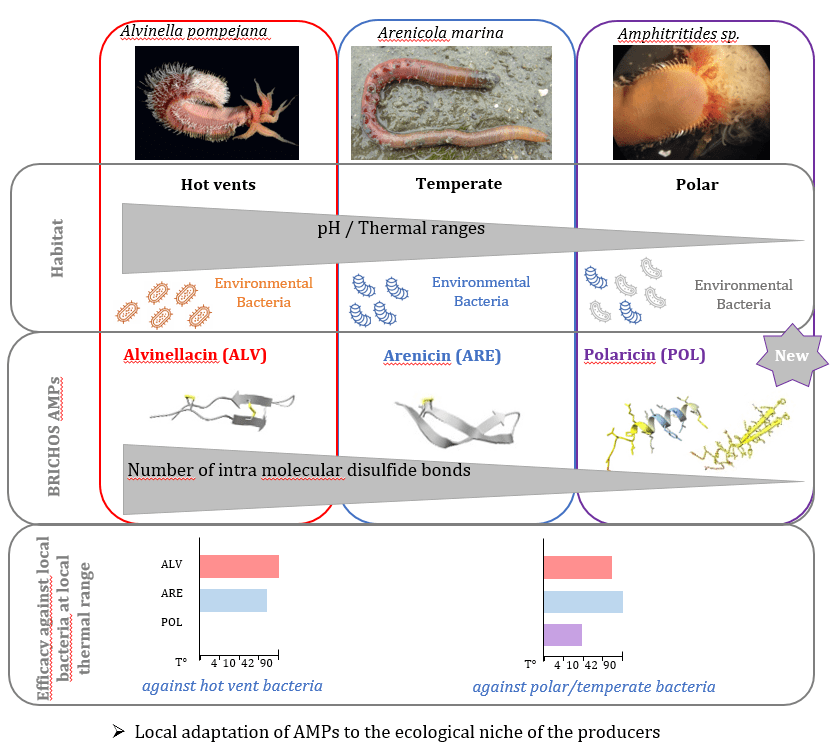| Aurélie Tasiemski |
| The environment shapes immune peptides |
Antimicrobial peptides (AMPs) play a key role in the external immunity of animals, offering an interesting model for studying the influence of the environment on the diversification and evolution of immune effectors. Alvinellacin (ALV), arenicin (ARE) and polaricin (POL, a novel AMP identified here), characterized from three marine worms inhabiting contrasted habitats (‘hot’ vents, temperate and polar respectively), possess a well conserved BRICHOS domain in their precursor molecule despite a profound amino acid and structural diversification of the C-terminal part containing the core active peptide.
The construction of variants using non-proteinogenic residues instead of cysteines (α-aminobutyric acid variants) leading to AMPs devoid of disulfide bridges, provided evidence that the disulfide pattern of the three AMPs allows for a better bactericidal activity and suggests an adaptive way to sustain the fluctuations of the worm’s environment. This work shows that the external immune effectors exemplified here by BRICHOS AMPs are evolving under strong diversifying environmental pressures to be structurally shaped and more efficient/specific under the ecological niche of their producer.
Title of the article : The diversification of the antimicrobial peptides from marine worms is driven by environmental conditions.
List of authors: Renato Bruno, Céline Boidin-Wichlacz, Oleg Melnyk, Daniela Zeppilli, Céline Landon, Frédéric Thomas, Marie-Anne Cambon, Mickael Lafond, Kamel Mabrouk, François Massol, Stéphane Hourdez, Marc Maresca, Didier Jollivet, Aurélie Tasiemski
Citation: Science of The Total Environment, 2023, Volume 879, 162875
Url: https://doi.org/10.1016/j.scitotenv.2023.162875
Laboratory: Center for Infection and Immunity of Lille (CIIL)
City: Lille
Country: France



